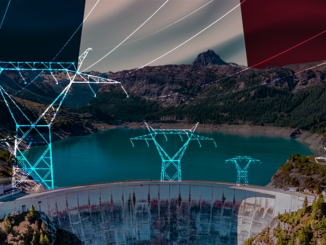
In the shadow of escalating geopolitical tensions and a faltering global economy, the European Union stands at a crossroads. Once hailed as a beacon of unity and prosperity, the bloc now grapples with internal divisions, economic stagnation, and policy missteps that threaten its very foundation. From Hungary’s defiant stance against Brussels’ directives to Italy’s industrial decline, the EU’s ambitious Net Zero energy policies and centralized political structure have exposed deep cracks.
Add to this waning support for the Ukraine war and the daunting task of ramping up military spending amid deindustrialization, and the question arises: Is the EU unraveling before our eyes? This article examines these intertwined failures through the lens of energy, finance, and politics as of October 2025.
Hungary: The Thorn in Brussels’ Side
Hungary, under Prime Minister Viktor Orbán, exemplifies the growing rift between national sovereignty and EU centralization. Orbán has repeatedly clashed with EU leaders over issues like rule-of-law violations, which have led to withheld aid and investigations into alleged espionage against EU institutions.
His government has launched petitions accusing the EU of dragging member states into war with Russia, framing Brussels’ support for Ukraine as a “war plan” that Hungary refuses to join.
This defiance stems from Hungary’s reliance on Russian oil and gas, which Orbán argues would cause economic collapse if severed.
Despite EU goals to phase out Russian energy by 2027, Hungary clings to these supplies, highlighting the bloc’s uneven energy transition and the political cost of enforcing uniformity.
Politically, Hungary’s “propaganda state” is showing cracks, but Orbán’s narrative of EU overreach resonates amid broader discontent.
On X, users echo this sentiment, warning that EU policies like high taxes and regulatory burdens are accelerating decline, with one post stating, “Europe is dying in real time. Businesses are leaving. Millionaires are leaving.”
Hungary’s resistance underscores how the EU’s supranational ambitions clash with national interests, fueling Euroscepticism.
Italy: A Case Study in Economic Stagnation and Deindustrialization
Italy, the EU’s third-largest economy, is emblematic of the bloc’s broader malaise. GDP growth has been anemic, projected at just 0.6% for 2025, below the eurozone average.
This slowdown masks deeper issues: deindustrialization driven by high energy costs and regulatory complexity.
Italy’s emissions reductions—down 26.4% since 1990—stem more from industrial decline than successful green policies, with power sector emissions dropping 64% amid falling output.
Electrical production has plummeted 15% since 2008, reflecting the unintended upside of economic woes: lower emissions from reduced activity.
Prime Minister Giorgia Meloni’s deficit reduction efforts hide structural problems, including ties to fossil fuels and a crisis in industry.
As one X post notes, “Europe is dying. There’s little hope for it. Most of them… are selling their industries to China, which is in turn shutting them down because European industry is a poor investment and energy costs are too expensive.”
Italy’s story illustrates how EU energy policies exacerbate deindustrialization, pushing businesses abroad and straining finances.
The Failure of EU Energy and Financial Policies
The EU’s Net Zero agenda, aiming for 55% emissions cuts by 2030 and full neutrality by 2050, has backfired spectacularly.
High energy prices—double those in the US and quadruple in some cases—have triggered deindustrialization across the bloc.
Europe’s industrial competitiveness suffers from disrupted supply chains, national policy divergences, and competition from Asia.
The European Green Deal, once a flagship initiative, is now criticized for exposing structural weaknesses, failing to balance environmental goals with economic reality.
Financially, the EU’s regulatory web imposes Net Zero compliance on large firms, exporting its challenges globally while crippling domestic growth.
Rollbacks on environmental policies are accelerating, with observers decrying the dilution of the Green Deal.
As X discussions highlight, “after two decades of left green policies European economies and societies are close to implosion: 1. Deindustrialization 2. Energy suicide.”
These policies have led to a 10% drop in energy consumption since 2014, not from efficiency but from economic contraction and increased US energy dependence.
The Political Nature of the EU: Centralization vs. Sovereignty
The EU’s political structure—prioritizing supranational decisions over national ones—has bred resentment. Brussels’ push for unity often ignores diverse economic realities, as seen in Hungary’s and Slovakia’s resistance to cutting Russian ties.
This centralization, combined with bureaucratic overreach, has subverted democracy, funding NGOs to manufacture consent while piling on regulations that export jobs and raise costs.
Far-right movements, like those in the Netherlands and Hungary calling for antifa designations as terrorists, reflect growing backlash.
X users lament, “The European Union has failed… It got too power hungry… Climate action was their pretext for their utopian green economy fantasy.”
This top-down approach has alienated members, accelerating the bloc’s fragmentation.Waning Support for the Ukraine WarPublic support for Ukraine remains high at 75% in the EU, but fatigue is evident.
In Ukraine itself, backing for the war effort has collapsed, with only a slim majority expecting EU membership soon.
Populist pressures mount, with political costs of aid rising amid economic strain.
Hungary’s Orbán opposes EU “war plans,” launching petitions to rally domestic opposition.
As the war enters a new phase, with Russia perceiving advantages, EU unity frays.
Military Buildup: An Impossible Task Amid Economic Decay
NATO’s 2025 summit set a 3.5% GDP defense spending target by 2035, but EU economies are ill-equipped.
Spending hit a record €381 billion in 2025, yet deindustrialization and high energy costs hinder further increases.
Higher defense outlays could boost growth modestly (0.3-0.6%), but they risk weakening environmental policies and exacerbating pollution.
With flat GDPs and inverted demographics, funding this amid deindustrialization is challenging.
X sentiments warn, “without cheap energy entire EU is going into a recession which it will likely never recover from.”
Conclusion: A Bloc on the BrinkThe EU’s death may not be imminent, but its current trajectory—marked by failed Net Zero policies, political divisions, war fatigue, and economic hurdles to military readiness—suggests profound transformation or collapse. Initiatives like the Clean Industrial Deal aim to reconcile decarbonization with growth, but without addressing core issues like energy affordability and sovereignty, revival seems elusive.
As one X post starkly puts it, “We are watching a continent shrink before our eyes.”
The EU must pivot from ideological pursuits to pragmatic reforms, or risk fading into irrelevance.
Got Questions on investing in oil and gas? Or do you have a Tax Burden in 2025?
Crude Oil, LNG, Jet Fuel price quote
ENB Top News
ENB
Energy Dashboard
ENB Podcast
ENB Substack






Be the first to comment